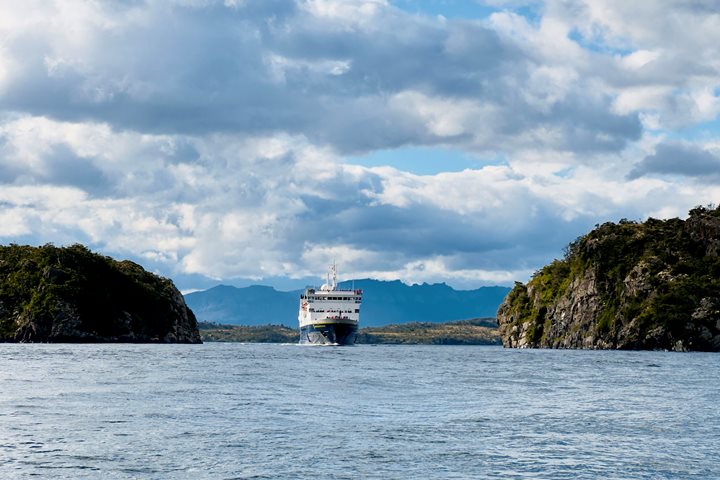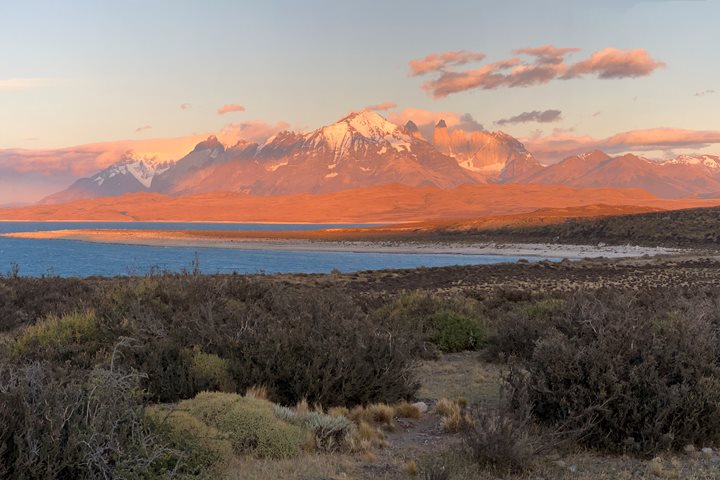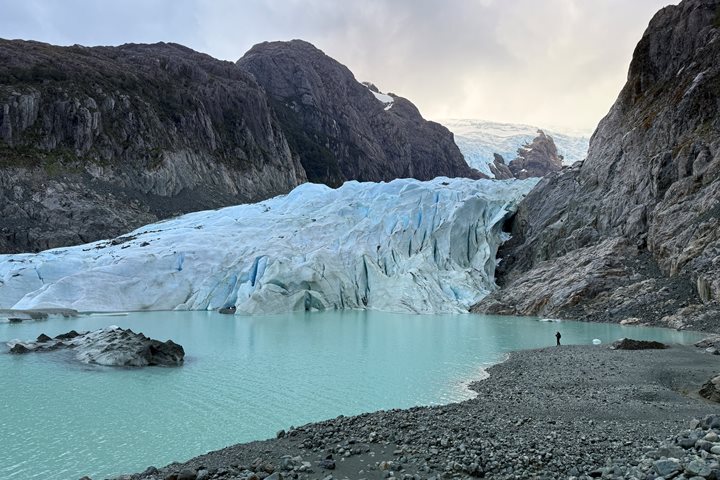Wind, blowing rain and salt spray did not deter us! In fact, this is why we’ve come to Patagonia – for adventure, exploration, and finding pleasure in facing adversity.
We went exploring today. We had traveled westward through Magellan Strait overnight, until we could feel the swell entering the strait from the open Pacific, when we veered north into Canal Smyth. But rather than follow the usual route of this inside passage, our captain took us eastward into a deep and narrow bay, Seno Aguila or Eagle Sound, so we could drop the Zodiacs and investigate. This cove, just one of thousands here in remote and unpopulated southern Patagonia, will have seen few human visitors over the millennia.
The bay opened up into two corners. We ventured northward to the slightly less windy corner, and poked our Zodiac bows toward the mouth of a small river gushing into the fjord. Although this adventure was more about experiencing the elements and landscape, we still saw lots of bird life, including skuas soaring on the gusts, steamer ducks bobbing on the white caps, and dark-bellied cinclodes flitting about the glistening rocks on the shorelines.
After drying out and warming up on board over lunch, National Geographic Resolution continued northward. Grey cliffs loomed over both sides of the ship, as Kevin Rattue gave us an extremely timely presentation about the geology of Patagonia.
We finished our day with an extended cocktail hour extended to allow for a slightly later dinner, so we could be out on deck as we passed through Kirke Narrows. This is one of the navigational challenges of this journey and not to be taken lightly, especially when the Patagonian winds blow forcefully like today. Our captain expertly threaded the needle, guiding National Geographic Resolution through the tiny gap between islets and cliffs, and on towards Puerto Natales, where we are now positioned for tomorrow’s adventures in Torres del Paine National Park.









